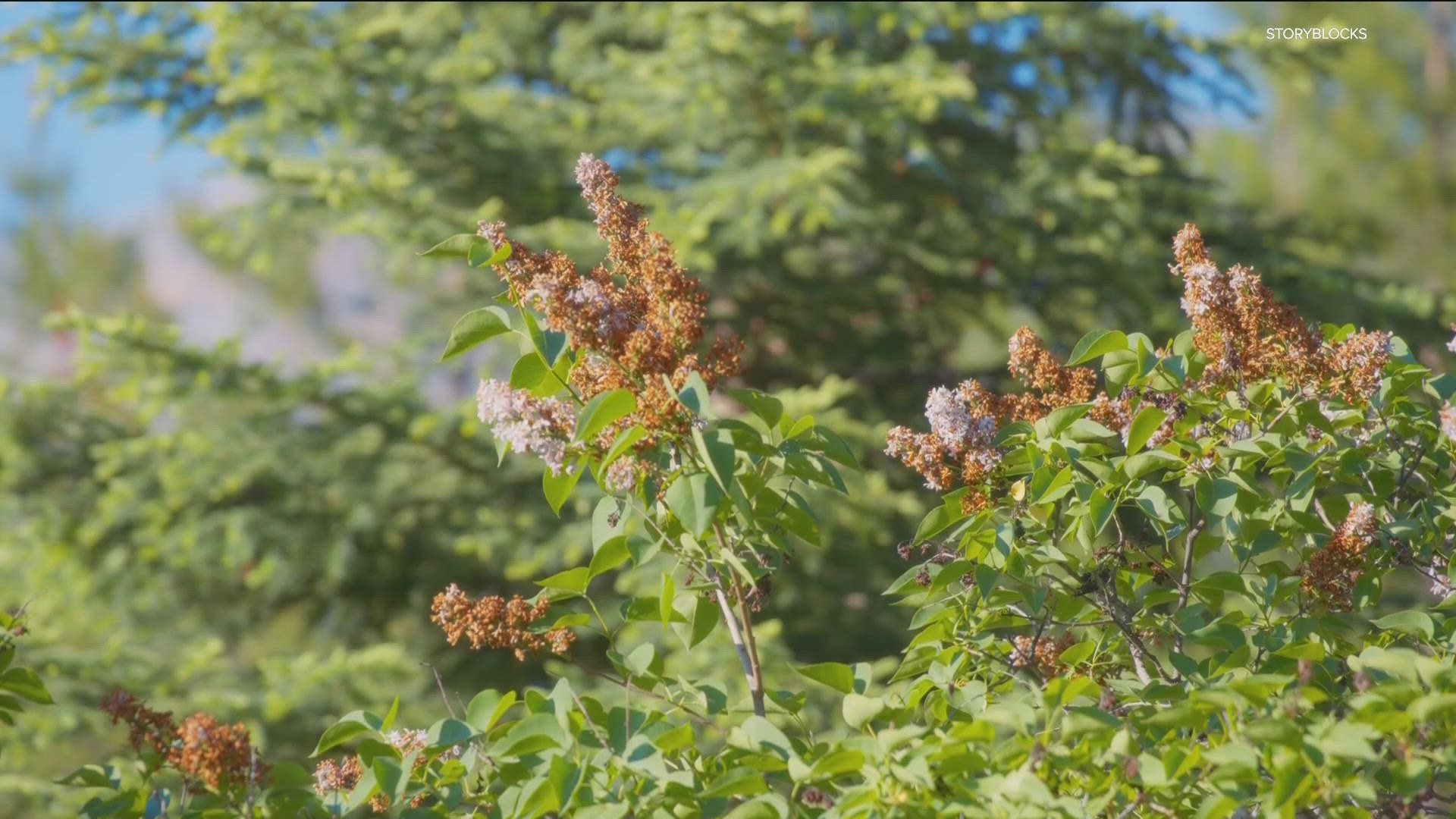GOLDEN VALLEY, Minn — Many of you have noticed your lilacs aren’t looking so great this year.
The problem we’re seeing is Leaf Spot, a fungus that starts off as brown spots on the leaves and then causes the leaves to turn completely brown, curl and fall off the plant. We confirmed with the Arboretum too that this is the culprit.
The wet weather pattern from this spring and summer has led to fungal problems for many plants and lilacs are no exception. The lack of heat helped as well. Leaf Spot thrives in humid conditions with moderate temperatures. And Mother Nature gave it just that this spring and early summer.
The fungus produces spores on the leaves and then wind and rain can spread it around.
The good news is that although ugly, a leaf spot infestation generally won’t affect the health of your plant. However, if your lilac is infected for several years in a row it may suffer.
There are a few things you can do to prevent the same problems next year.
1. Rake up and dispose of the leaves that have fallen off your lilac bush or tree. Do not put them in the compost.
2. Make sure you keep your lilac as healthy as possible by fertilizing, watering and making sure your lilac is getting enough sunshine.
3. To combat the weather, which we can’t control, trim back other plants to maintain good air circulation.
4. Prune off any dead branches.
In early spring, a fungicide can be applied to control the Leaf Spot in its early stages but must be applied regularly throughout the season to be effective. We would generally only recommend this option if you’ve had fungal issues on your lilacs for several years in a row.

